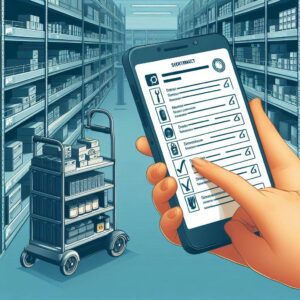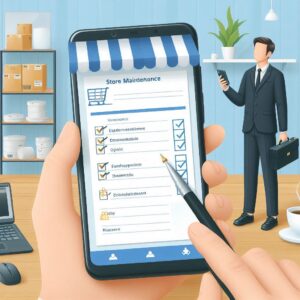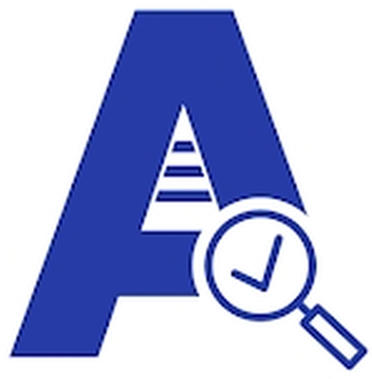Store Maintenance Checklist
By digitizing the store maintenance checklist inspection process, businesses can streamline operations, ensure consistency, and enhance overall efficiency and compliance.

1. General Store Cleanliness
- Entrance and Exterior:
- Storefront windows clean.
- Entrance area free of litter and debris.
- Exterior signage clean and well-lit.
- Parking lot clean and free of obstructions.
- Interior Floors:
- Floors clean and free of spills.
- Carpets vacuumed.
- No trip hazards present (e.g., loose tiles, mats).
- Restrooms:
- Restrooms clean and stocked with supplies.
- Trash bins emptied.
- Soap dispensers filled.
- No plumbing issues (e.g., leaks, clogs).
2. Lighting and Electrical
- Lighting:
- All lights functioning properly.
- Emergency lights operational.
- Light fixtures clean and free of dust.
- Proper lighting levels in all areas (sales floor, backroom, restrooms).
- Electrical:
- No exposed wiring.
- Electrical outlets functioning.
- Extension cords used safely.
- Electrical panels accessible and properly labeled.
3. Fixtures and Fittings
- Shelving and Displays:
- Shelves clean and organized.
- Display units stable and secure.
- No sharp edges or broken parts.
- Signage:
- Signage in good condition and up-to-date.
- Price tags and promotional signs accurate and clearly visible.
- Emergency exit signs illuminated and visible.
4. Safety and Security
- Fire Safety:
- Fire extinguishers accessible and inspected.
- Smoke detectors operational.
- Fire exits clear and unobstructed.
- Emergency evacuation plan posted.
- Security:
- Security cameras functioning and positioned correctly.
- Alarm systems tested and operational.
- Locking mechanisms on doors and windows secure.
5. HVAC and Plumbing
- Heating, Ventilation, and Air Conditioning:
- HVAC systems functioning properly.
- Air filters clean and replaced regularly.
- Temperature levels comfortable for customers and staff.
- Plumbing:
- No leaks or drips from faucets.
- Toilets and sinks functioning properly.
- Hot and cold water available in restrooms and break rooms.
6. Inventory and Stock Management
- Storage:
- Stockrooms organized and free of clutter.
- Products stored off the floor.
- Inventory levels checked and updated regularly.
- Merchandising:
- Products displayed neatly and attractively.
- Expired or damaged products removed from shelves.
- Adequate stock levels on the sales floor.
7. Employee Areas
- Break Room:
- Break room clean and tidy.
- Appliances (microwave, fridge) clean and functioning.
- Trash bins emptied regularly.
- Locker Room:
- Employee lockers in good condition.
- Area clean and free of personal items left out.


Store Maintenance Checklist Using eAuditor Audits & Inspections


Performing inspections using eAuditor Audits & Inspections involves a systematic approach to ensure thorough and efficient inspections. Here’s a detailed guide on how to perform these inspections step-by-step using eAuditor Audits & Inspections:
1. Log In
- Open the App: Launch the store maintenance inspection eAuditor Audits & Inspections app on your mobile device.
- Log In: Enter your credentials to log in. If applicable, use Single Sign-On (SSO) for quick access.
2. Select Store Location
- Choose Location: Select the store location where the inspection will be conducted from a list of available locations.
- GPS Tagging: Ensure the app captures your current location for accurate geotagging of inspection data.
3. Select Inspection Checklist
- Choose Checklist: Select the appropriate Store Maintenance Checklist for the type of inspection you are performing (e.g., safety, cleanliness, equipment maintenance).
- Customize Checklist: Modify the Store Maintenance Checklist if needed to include any additional items specific to the store or current inspection needs.
4. Conduct Inspection
- Navigate Checklist: Go through each item on the checklist systematically.
- Record Observations:
- Pass/Fail Items: Mark each item as pass or fail based on your observations.
- Comments: Add comments to provide more details about the observed conditions.
5. Capture Evidence:
- Photos/Videos: Use the app’s camera functionality to take photos or videos of issues.
- Annotations: Annotate the photos to highlight specific problems.
6. Submit Inspection Report
- Review Inspection: Review all the recorded data, comments, and evidence.
- Submit Report: Submit the completed inspection report through the app.
7. Notifications and Task Assignments
- Receive Notifications: The app will send notifications to relevant stakeholders about the completed inspection and any issues found.
- Task Assignments: Assign tasks to specific maintenance staff to address the identified issues, setting priorities and deadlines.
8. Track and Resolve Issues
- Task Tracking: Maintenance staff receive tasks and can update the status (e.g., in progress, completed) as they work on them.
- Issue Resolution: Resolve the identified issues and update the app with the resolution details and any additional evidence (e.g., post-repair photos).
9. Generate Reports
- Comprehensive Reports: Generate detailed inspection reports that include all observations, evidence, and resolved issues.
- Analytics Dashboard: Use the app’s analytics features to track trends, identify recurring issues, and assess overall maintenance performance.
10. Review and Feedback
- Management Review: Store managers review the inspection reports and track the resolution of tasks.
- Provide Feedback: Users can provide feedback on the inspection process and suggest improvements for the app or checklist.
